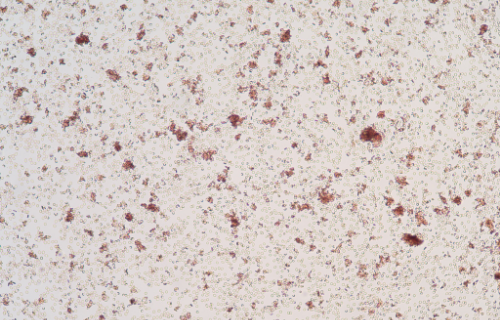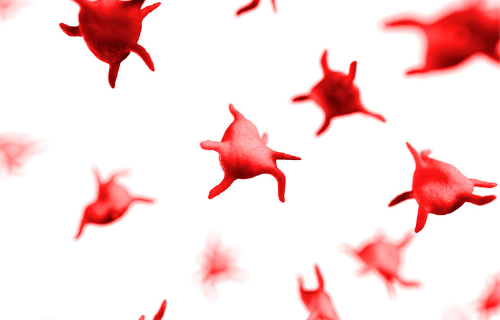Difference Between Platelet Agglutination and Aggregation

Platelet agglutination and aggregation are both processes primarily involving the clumping of blood cells. Platelet agglutination includes the presence of agglutin and is usually used as a diagnostic tool, where platelet aggregation is part of the body’s normal clotting process or occurs during agglutination processes as diagnostic tool. Although the processes have similarity in terms of cell clumping, each has unique uses and functions, and presents with specific associated disorders.
Differentiating the agglutination and aggregation can become challenging to understand, as they are complex in their differences and often overlap with each other in specific uses. This being said, understanding the presence of both agglutination and aggregation in the body or lab paints a clearer picture of the workings within the blood and immune systems of the human body.

Introduction
Definition
Platelet agglutination is the clumping together of particles due to agglutinins and occurs in a test tube, which is a useful diagnostic tool in medicine.
Platelet aggregation is the platelet-to-platelet adhesion for clumping and plays a vital role in the formation of a blood clot to attach to an area in the body or can form part of the diagnostic process in medicine.
Agglutinins and The Importance of Platelet Agglutination and Aggregation
Agglutinin is a substance (an antibody or sugar-binding protein) present in the blood causing particles to aggregate and coagulate. This substance is present in both agglutination and aggregation.
Agglutination is a phenomenon that occurs when agglutinin is added to blood or bacteria (in a suspended particle state) inside a test tube, and the agglutinin binds to an agglutinin-specific structure on one of the particles resulting in aggregation and separation. The aggregated particles fall to the bottom of the test tube, thus separating, and leave a clear suspension at the top.
Agglutination serves as an important factor in medicine. When blood agglutinins are added to a blood suspension in a test tube, agglutination diagnoses different blood types. This is crucial for identifying compatibility for blood transfusions in patients. Additionally, agglutination can indicate previous of current exposure of blood infected with pathogens, as well as be useful in identifying new bacteria or cells.
Platelet aggregation is vitally important for blood clumping and plays a key role in blood clotting after injury. In addition to this, aggregation plays an important part in the agglutination process as a medical diagnostic tool. When agglutinins are added to an in vitro (test tube) suspension, aggregation (clumping of the cells) allows the agglutination phenomenon to occur.
Disorders and Responses Relating to Platelet Agglutination and Aggregation
Cold agglutinin disease occurs when there is a high concentration of cold sensitive antibodies circulating in the body. This is a rare autoimmune disorder, a form of autoimmune haemolytic anaemia, and causes red blood cells to agglutinate and break down cell walls in low temperatures. In this condition, specific proteins that usually attack bacteria attach to red blood cells and cause them to agglutinate and undergo premature destruction.
An agglutination related response that can occur in the body is one brought on by the venom of Formosan Pit Viper. This response causes clumping due to the platelet membrane glycoprotein Ib agonist found in the venom.
In relation to platelet aggregation, a platelet aggregation disorder that may occur is one where the platelets cannot aggregate for blood clotting due to a missing protein on the surface of platelets. In medicine, this is referred to as Glanzmann Thrombasthenia (also known as Glanzmann disease, GTA, thrombasthenia of Glanzmann and Naegeli, and many more). This is an inherited disorder and is rare. When left untreated, severe bleeding associated with this disorder may be life threatening.
Table of comparison between platelet agglutination and aggregation

Summary
Platelet agglutination and aggregation are both important processes in the clotting of blood for vital medical diagnostic tests as well as part of a bodily response to form clots. Both agglutination and aggregation can present as human disorders relating to haematology (blood cells) which range in severity. The main difference between agglutination and aggregation is that agglutination involves clumping because of an antibody and antigen interaction, where aggregation involves clumping as a result of platelet-to-platelet adhesion.
FAQ
What is platelet agglutination?
Platelet agglutination is the clumping together of platelets in response to platelet agglutinins. One such agglutinin is called agglucetin, a tetrameric glycoprotein found in Formosan Pit Viper venom. This protein elicits a biphasic response starting with agglutination which is then followed by aggregation.
Do platelets aggregate or agglutinate?
Platelets detect blood vessel damage and create aggregates, thus stopping the blood loss. There are two kinds of activated platelets: “ordinary” ones (capable of aggregation) and “super-activated” (pro-coagulant platelets, able to accelerate coagulation). Platelets can agglutinate when exposed to certain agglutinins such as certain snake venom. This is also known as clumping due to the platelet membrane glycoprotein Ib agonist found in the Formosan Pit Viper.
What is aggregation of the platelets?
Platelet aggregation refers to the platelet-to-platelet adhesion that is necessary for the formation of a blood clot. A main adhesion molecule involved in platelet aggregation is the membrane protein, GPIIb/IIIa complex, which remain in an inactive form in resting platelets.
What is the difference between platelet aggregation and coagulation?
When activated during primary haemostasis, the aggregating platelets change their shape from discoid into an amoeboid one, with multiple filopodia to improve interactions and spreading on the surface forming the main body of the platelet thrombus. The super-activated platelets or pro-coagulant platelets become spherical and enlarged during secondary haemostasis and are then able to enhance the clot and accelerate the blood clotting reaction
- Difference Between a Cochlear Implant and Normal Hearing - October 4, 2022
- Difference Between Obstructive and Restrictive Spirometry - September 11, 2022
- The Difference Between White Box and Black Box Testing - September 11, 2022
Search DifferenceBetween.net :
Leave a Response
References :
[0]Periayah, M.H., Halim, A.S and Mat, Saad A.Z. Mechanism Action of Platelets and Crucial Blood Coagulation Pathways in Hemostasis. International Journal of Hematology, Oncology and Stem Cell Research. 2017, vol. 11, no. 4, pp:319-327.
[1]Rumbaut, R.E and Thiagarajan, P. Platelet-Vessel Wall Interactions in Hemostasis and Thrombosis. San Rafael (CA): Morgan & Claypool Life Sciences. 2010. Chapter 4, Platelet Aggregation. https://www.ncbi.nlm.nih.gov/books/NBK53449/
[2]Shih, C.H., Chiang, T.B and Wang, W.J. A critical role for the regulation of Syk from agglutination to aggregation in human platelets. Biochemical and Biophysical Research Communications. 2014, vol. 443, no. 2, pp:580-585.
